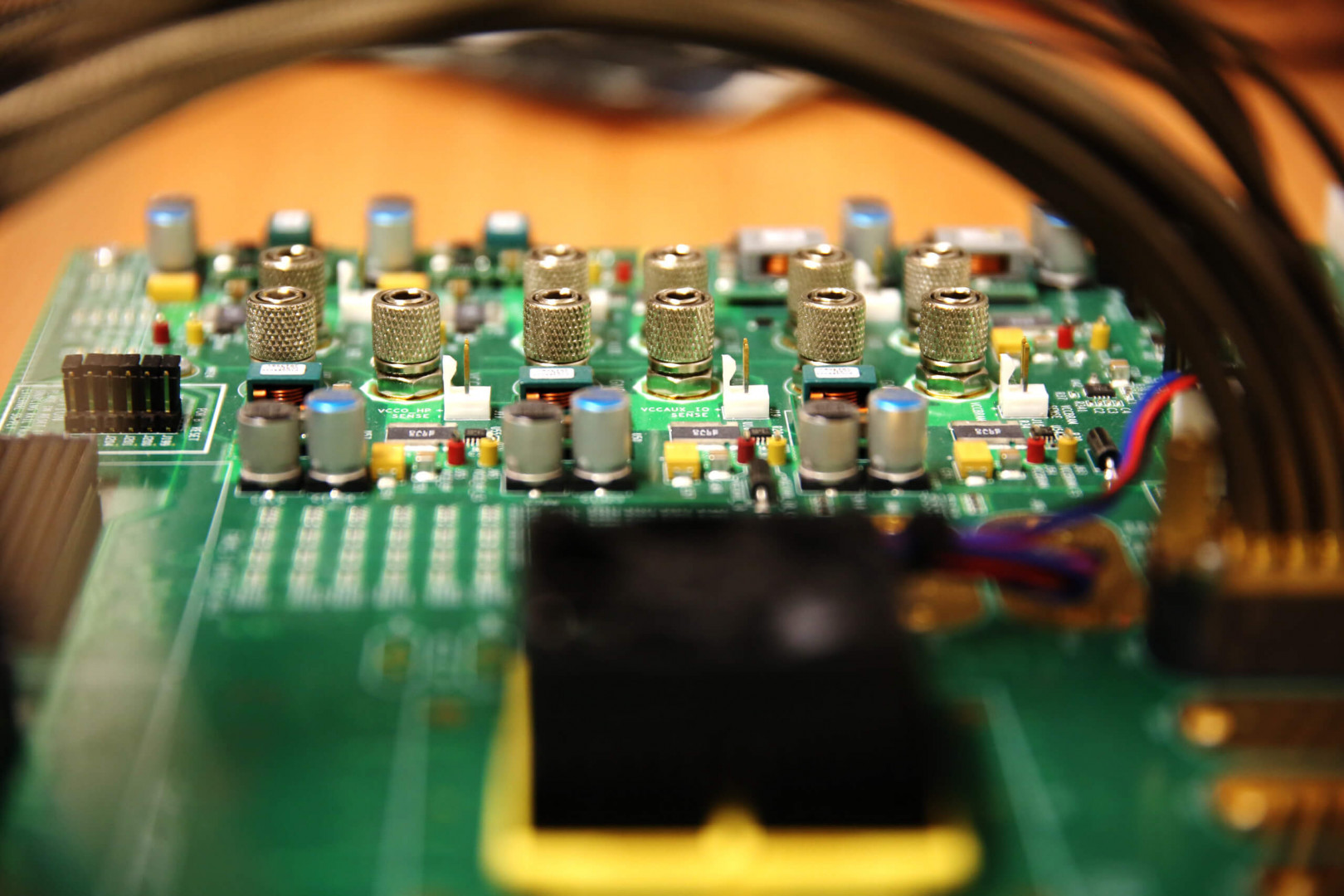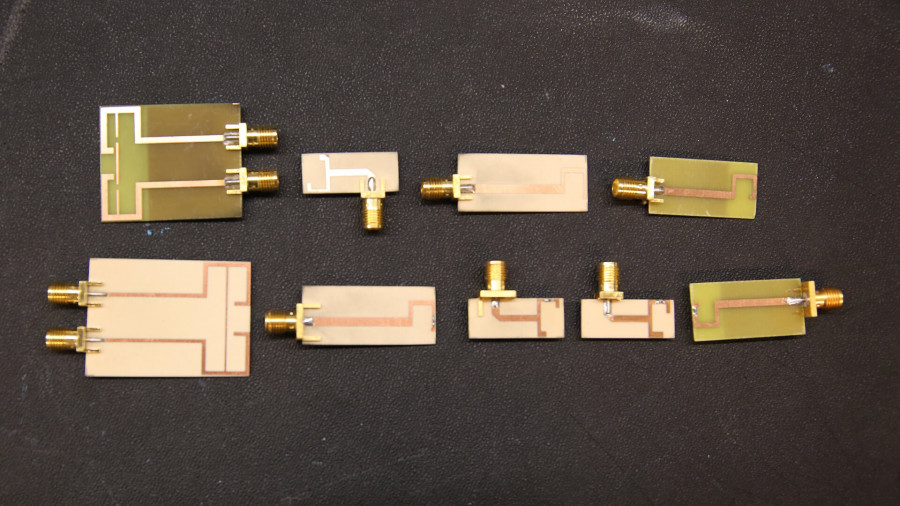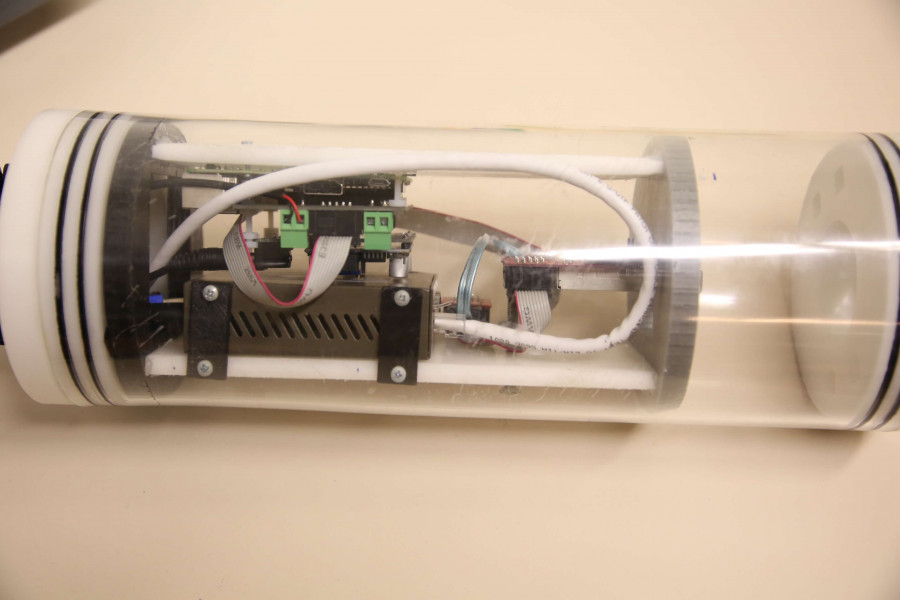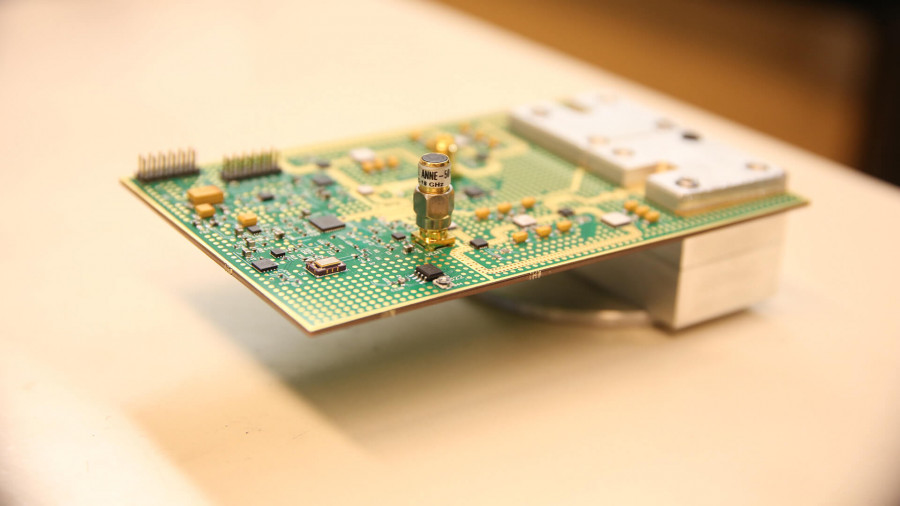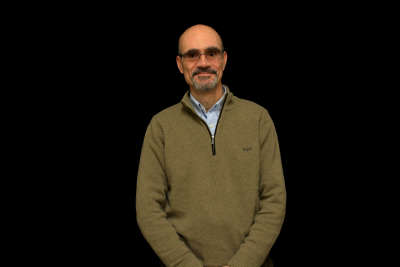About
The Optical and Electronic Technologies (OET) Research Laboratory is an Advanced laboratory for optical and microwave communications, where researchers can test and characterise optoelectronic devices, RF/microwave circuits and waveguides.
The laboratory was created in 2007 and is used for research purposes by 25 collaborators, all of them working at INESC TEC’s Centre for Telecommunications and Multimedia (CTM).
Location: INESC TEC Building, FEUP Campus, Porto
Objectives of the laboratory
- Demonstrate the concept of cognitive radio in space.
- Design and develop compact on-chip integrated antennas for current and future wireless applications.
- Investigate new technologies and architectures for enabling THz communication systems in beyond-5G scenarios.
- Demonstrate wireless power transfer solutions for battery recharging in underwater environment (both freshwater and saltwater scenarios).
- Demonstrate short range RF and optical wireless high-speed communications in underwater maritime application scenarios.
- Devise new microsystems and RF/microwave based technology solutions for biomedical sensing applications, targeting treatment, sensing and stimulation purposes.
- Demonstrate efficient short-range communication for stand-alone wireless sensors.
- Study the effectiveness of new hardware methods for chip security.
- Explore the use of dynamic reconfiguration for baseband processing 5G wireless telecommunications.
- Investigate the use of adaptive hardware acceleration in high performance computing platforms.
The main actions of the OET area are
- Supervise MSc and PhD students towards the proposed objectives.
- Design and optimisation of antennas for sub-THz and THz frequency range; design of on-chip antennas.
- Design antennas for operating in RF underwater wireless communications.
- Design and optimisation of a wireless power transfer system, including both inductor and electronics, in underwater maritime scenarios.
- Design reconfigurable hardware in ASIC for local efficient computation in biological applications.
- Design and test a short-range transmitter for biological applications.
- Design a computational method for chip security.
- Coordinate the final demonstrations in H2020 projects SCREEN and iBROW.
- Coordinate the final demonstration of EEA grants funded project ENDURE.
- Submission and collaboration on new project proposals along the targeted research lines, specifically ultra-broadband wireless communications beyond 5G.
- Participate in European COST actions within the framework of the targeted research lines.
- Participate in the technical committees of international conferences.


